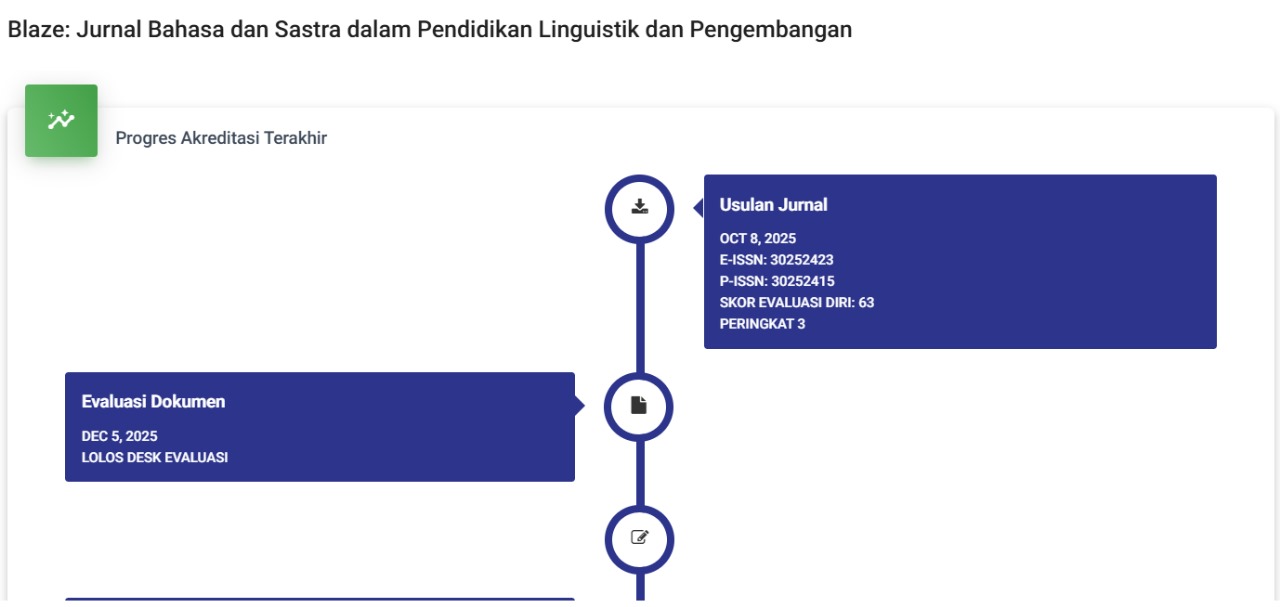The Lottery: A Study of Narrative Irony and Its Role in Exploring Human Nature
DOI:
https://doi.org/10.59841/blaze.v2i3.1529Keywords:
Narrative irony, The lottery, CharacterAbstract
The purpose of this study was to identify and analyze various forms of narrative irony contained in Shirley Jackson's short story "The Lottery." This qualitative study used an in-depth text analysis approach to the narrative of the short story. This research method involved structural analysis to identify important narrative elements such as conflict, plot, and character. Using an irony analysis approach, this study examined how Shirley Jackson used this technique to highlight contradictions in human behavior and society. This study provided a deeper understanding of how narrative ironies function in literary works to stimulate critical thinking about human nature.
References
Bailey, P. (2000). Shirley Jackson's 'The Lottery': A Feminist Interpretation. Studies in Short Fiction, 37(2), 189-203.
Booth, W. C. (1961). The rhetoric of fiction. University of Chicago Press.
Hamer, L. (2007). Metanarrative and Dramatic Irony in the Fiction of Shirley Jackson. Gothic Studies, 9(1), 53-70.
Jackson, S. (1948). The Lottery.
Korges, B. (1990). Irony in literature. Columbia University Press.
Malin, I. (1959). 'The Lottery': A Symbolic Analysis. American Imago, 16(2), 207-222.
Meyers, M. (1976). Thematic Unity in Shirley Jackson's 'The Lottery'. Studies in Short Fiction, 13(3), 339-346.
Syam, E. (2012). Simbol dan Ironi dalam cerpen The Lotery, karya Shirley Jackson. Universitas lancing Kuning.
Turner, M. (2009). The literary mind: How literature co-evolves with human cognition. Oxford University Press.
Westlund, S. (2002). Understanding irony in literature. Greenwood Publishing Group.
Downloads
Published
How to Cite
Issue
Section
License
Copyright (c) 2024 BLAZE : Jurnal Bahasa dan Sastra dalam Pendidikan Linguistik dan Pengembangan

This work is licensed under a Creative Commons Attribution-ShareAlike 4.0 International License.








